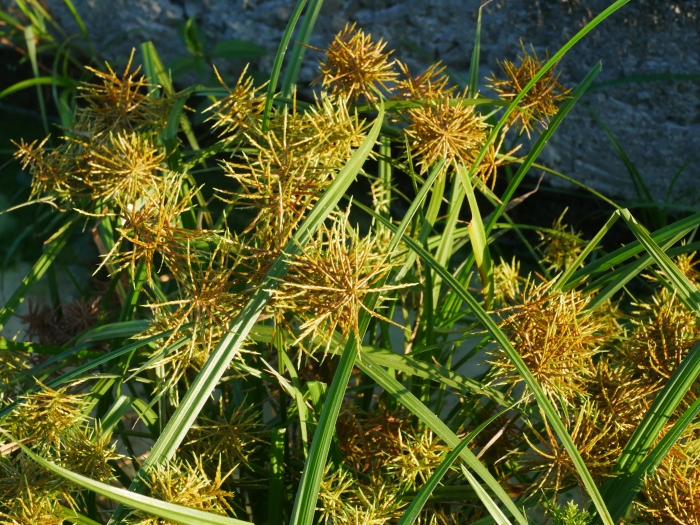Fragrant Flatsedge
(Cyperus odoratus)
Fragrant Flatsedge (Cyperus odoratus)
/
/

Jacy Chen
CC BY 4.0
Image By:
Jacy Chen
Recorded By:
Copyright:
CC BY 4.0
Copyright Notice:
Photo by: Jacy Chen | License Type: CC BY 4.0 | License URL: http://creativecommons.org/licenses/by/4.0/ | Rights Holder: Jacy Chen | Publisher: iNaturalist | Date Created: 2021-12-13T16:14:18-08:00 |

























Estimated Native Range
Summary
Cyperus odoratus, commonly known as Fragrant Flatsedge, is an annual sedge native to a variety of wetland habitats including marshes, wet meadows, pond margins, and ditches across tropical and warm temperate regions worldwide, such as the Americas, Southeast Asia, Australia, and Africa. It typically grows to a height of 10-35 inches (25-90 cm) and has a clumping growth form. The plant features triangular stems topped with umbrella-like clusters of greenish-brown spikelets, which are most prominent in the summer and early fall. The flowers are not particularly showy, but the plant is named for its pleasant aroma when crushed.
Fragrant Flatsedge is valued for its ability to thrive in wet conditions and is often used in water gardens, rain gardens, and as a naturalizing plant in wetland restoration projects. It prefers full sun to part shade and can tolerate a range of soil types, provided they are consistently moist. While it is not known for significant pest or disease issues, it can become invasive outside its native range, spreading aggressively by seeds and rhizomes. Gardeners should be cautious and check local regulations before planting.CC BY-SA 4.0
Fragrant Flatsedge is valued for its ability to thrive in wet conditions and is often used in water gardens, rain gardens, and as a naturalizing plant in wetland restoration projects. It prefers full sun to part shade and can tolerate a range of soil types, provided they are consistently moist. While it is not known for significant pest or disease issues, it can become invasive outside its native range, spreading aggressively by seeds and rhizomes. Gardeners should be cautious and check local regulations before planting.CC BY-SA 4.0
Plant Description
- Plant Type: Grass
- Height: 1-3.3 feet
- Width: 1-3.3 feet
- Growth Rate: Moderate
- Flower Color: N/A
- Flowering Season: Summer, Fall
- Leaf Retention: Deciduous
Growth Requirements
- Sun: Full Sun, Part Shade
- Water: High, Aquatic
- Drainage: Fast, Medium
Common Uses
Bird Garden, Low Maintenance, Water Garden
Natural Habitat
Wetland habitats including marshes, wet meadows, pond margins, and ditches
Other Names
Common Names: Fragrant Flatsedge, Rusty Flatsedge, Fragrant Cyperus, Fragrant Umbrella Sedge, Gates Cyperus
Scientific Names: , Cyperus odoratus, Cyperus acicularis, Cyperus acicularis, Cyperus consocius, Cyperus fastuosus, Cyperus ferax var. bulbiferus, Cyperus jubiflorus, Cyperus lomentaceus, Cyperus poeoides
GBIF Accepted Name: